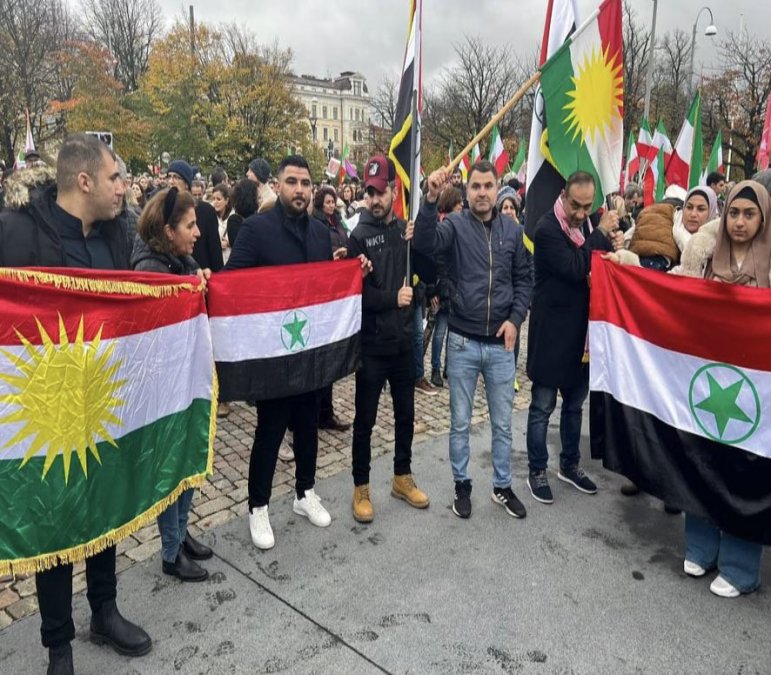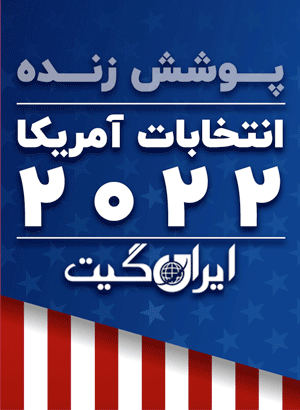National federalism, an outdated version for timid separatists
According to Iran Gate, the main motivation for the formation of a federal government and insistence on national divisions is rooted in the ideological support of the Marxist-Islamic Mojahedin group. It aims to divide the common resources of the central government of Iran and eliminate the power competition between regional interests by resorting to a decentralized division method, ultimately weakening the country’s defense capabilities and leading to its disintegration.
Today’s mourners of national federalism, who played a significant role in shaping the destructive religious revolution of 1979, now, with the scent of the ruling regime’s demise in the air, are aligning themselves with Islamic Marxists and left-wing republicans. They are making collective efforts to revive the unholy unity of the past and completely destroy what remains of Iran after forty years of Islamic Republic’s destruction.
The propagation of national federalism in Iran is entrusted to those who have no commitment to preserving the territorial integrity, historical civilization, and cultural heritage of Iran. Their eternal desire has been to draw the line of separation around ethnic groups that have peacefully coexisted for centuries.
The reduction in Iran’s defensive depth, which has been the target of strategic plans by global powers for the past two centuries and the motivation for multiple military attacks from east to west and north to south of the country, has been included in the hidden and overt schemes of intelligence security organizations since the revolution in 1957 and the change of the monarchy system to an unofficial foreign policy towards some neighboring countries and regional powers.
Iran’s geographical depth, or the distance between its center and external threats and front lines facing invading forces, is the most important aspect of the country’s strategic depth and a determining factor in preserving national security.
Other aspects of Iran’s strategic depth, or in other words, its defensive depth, include the vastness of its territory, its population, its political geography, and its unique combination of national resources, especially energy reserves, which, if managed properly, can make the country resilient and invincible in defense and provide its inhabitants with the highest possible level of welfare.
After the establishment of the Islamic government in Tehran, the strategic depth and growing power capabilities of Iran, which should have been utilized in defense of national integrity, regional security, and cooperation with neighboring countries, were instead used to implement the theory of expanding and strengthening the Shia Crescent and as a motivation for threatening the existence and integrity of regional countries.
Since then, several neighboring countries, mostly Muslim, along with Israel, have devised preventive or deterrent measures to counter the security threats posed by the religious government in Iran. They have targeted the country’s capabilities by their hidden and overt plans.
The division of Iran in the grand game
During the 19th and 20th centuries, the Russian and British empires, in pursuit of their strategic interests, saw the reduction of Iran’s defense depth as advantageous. They resorted to military capabilities and wars against Iran, as well as collusion with each other, to achieve this goal.
The first military attacks of the Russian Empire against Iran, which resulted in the separation of Central Asian and Greater Khorasan territories in the east, as well as Shirvan Talysh and Baku in the north of the country, occurred in the nineteenth century after the final defeat of Napoleon and the influence of the decisions made at the Congress of Vienna in 1819 and the establishment of a new order among the victorious countries. As a result of Iran’s reduced defensive depth from the northeast to the northwest, Russia gained a superior position and, relying on the positions it had acquired, became aware of Iran’s territories in Herat during its competition with Britain’s presence in the Indian subcontinent after the conquest of Bukhara.
Britain’s invasion of southern Iran in 1856 during the early reign of Naser al-Din Shah Qajar, although to some extent a preemptive measure against the advances of the Russian Empire in Central Asia and to neutralize the threat to its sphere of influence in the region, also took into account the reduction of Iran’s defensive depth.
During Britain’s military attack on the south of the country, the island of Kharq was occupied, and Naser al-Din Shah, after a brief resistance, withdrew the siege of Herat, resulting in Afghanistan being separated from Iranian territory.
The separation of Herat from Iran was the result of foreign conspiracies and the central government’s weakness. After several changes of hands between the Afghans and Uzbeks, it finally became certain during the competition between Britain and Russia. The opportunism of major powers and their continuous intention to reduce Iran’s defensive depth and weaken the country did not end with just separating major parts of Iran’s land and water.
The continuation of foreign greed and the exploitation of the weakness of the Iranian central government led to the signing of a treaty in 1907 between the British and Russian empires, which resulted in the southern part of the country being handed over to the feudal government and the northern part being assigned as exclusive spheres of influence for the Tsarists.
After the agreement on the division of the country into northern and southern spheres of influence, the central region also apparently came under the control of the central government as a neutral zone. However, in practice, these areas also became scenes of turmoil, conflicts, and power struggles between the two dominant powers.
After the end of World War I, British forces, aware of the complete weakness of the Iranian central government during the final days of the Qajar dynasty and the rule of Ahmad Shah in Bushehr, invaded in order to fully occupy Shiraz and the province of Fars.
Russia, after the end of World War I and the establishment of the Bolshevik government in 1917, had briefly allied with Iran. However, after consolidating their power in Moscow and particularly after the defeat of Nazi Germany during World War II, they seized the opportunity to pursue their own interests in dividing Iran. Their goal was to reduce Iran’s defensive capabilities and divide it into two national republics: the Republic of Mahabad and the autonomous government of Azerbaijan.
Neighboring countries’ mobilization against Iran
After the sudden change in Iran’s political system and the emergence of a revolutionary government with ideological and developmental aspirations instead of the traditional nationalistic government, neighboring countries quickly took action using their own tools and capacities to counter the new situation and seek cooperation with previous regional allies.
The full-scale military invasion of Iraq into Iranian territory in the year following the revolution and the eight-year war led to the sheltering of the Mujahideen-e Khalq and the equipping of their forces under the banner of the Liberation Army, forming a proxy war within Iran. The Mersad operation and the support for separatist elements in the western and southern regions of Iranian Kurdistan and Khuzestan were actions taken by only one neighboring country, Iraq, in order to reduce Iran’s strategic depth and counter threats to its religious government.
As a result of the Islamic Republic’s abuse of power and Iran’s natural capacities against regional countries such as Pakistan and Turkey, which prior to the revolution in 1979 considered the defense of Iran’s territorial integrity as self-defense in their defense agreements with Baghdad, they now support Iran’s policy of disintegration under the guise of promoting ethnic federalism and upholding the rights of peoples.
Pakistan is a haven for separatist armed groups in Sistan and Baluchestan, who occasionally capture lower-ranking Iranian soldiers and agents within its borders. Turkey, in Ankara, hosts Azerbaijani-speaking groups by promoting South Azerbaijan and the security organization of that country supports separatists in European countries by funding seemingly independent conferences of republicans.
Turkey’s unofficial support for the idea of South Azerbaijan joining the Republic of Azerbaijan aims to reduce Iran’s strategic depth and divert its capacities to the ears of Baku’s government officials, much like music has incited nationalist federalist theorists for the past two decades.
Saudi Arabia, which had friendly and peaceful coexistence with Iran before the revolution and accepted Iran’s regional dominance, has not lagged behind in countering Iran’s strategic depth. With the aim of weakening Iran, it supports separatist groups and nationalist federalist pioneers, who have renamed Khuzestan, which has a history of over a thousand years, as Arabistan, and carries out field operations from Bahrain to Basra and within the territory of Khuzestan, as well as in the media and virtual world, at a cost of hundreds of millions of dollars.
Israel, in the past, has been an unofficial military ally of Iran. Despite recent expressions of solidarity by the Tel Aviv government with the Iranian people in their confrontation with the Islamic Republic, Israel sees the creation of Greater Kurdistan and the separation of part of Iran’s territory as serving its own security interests, and supports such thinking with both overt and covert actions.
Efforts to disintegrate Iran have been made by managing and supporting armed separatist uprisings in border areas under the guise of promoting the theory of national federalism, with the aim of establishing a secular federal democratic republic. Each of these separate parts is a unified plan that has been pursued for years with the cost and guidance of neighboring countries’ intelligence organizations and the consent of major powers against the existence of Iran.
The current efforts of proponents of national federalism to infiltrate opposition groups also mimic the tactic of taqiyya used by Khomeini, who used Marxist and so-called nationalist-religious groups opposed to the monarchy of Iran to conceal their true intentions and give a legitimate appearance to their foreign-inspired ideology.
The promotion of national federalism in Iran is entrusted to those who previously had no commitment to preserving the territorial integrity, historical heritage, and cultural legacy of Iran, and their perpetual desire has been to draw the lines of separation among ethnic groups that have peacefully coexisted for centuries.
The main motivation for establishing a federal government and insisting on national divisions, which the Islamic Marxist group Mojahedin-e Khalq has also supported in the past, is to divide the common capacities of the central government of Iran and eliminate the power competition among different regions of the country through a decentralized division method, ultimately reducing its defensive depth and completely disintegrating it.
Today’s mourners of national federalism, who had a share in shaping the destructive religious revolution of 1979 and forty years ago educated the Muslim People’s Constructive Party for nationalistic purposes but failed to achieve their goal, are now parallel with Islamic Marxists and left-wing republicans, and are making new efforts to revive the unholy unity of the past and finally destroy what remains for Iran after the destruction caused by the Islamic Republic, in line with the plans developed by foreign intelligence organizations.


